Minh Nguyen
Finetuning LLMs for Automatic Form Interaction on Web-Browser in Selenium Testing Framework
Nov 19, 2025Abstract:Automated web application testing is a critical component of modern software development, with frameworks like Selenium widely adopted for validating functionality through browser automation. Among the essential aspects of such testing is the ability to interact with and validate web forms, a task that requires syntactically correct, executable scripts with high coverage of input fields. Despite its importance, this task remains underexplored in the context of large language models (LLMs), and no public benchmark or dataset exists to evaluate LLMs on form interaction generation systematically. This paper introduces a novel method for training LLMs to generate high-quality test cases in Selenium, specifically targeting form interaction testing. We curate both synthetic and human-annotated datasets for training and evaluation, covering diverse real-world forms and testing scenarios. We define clear metrics for syntax correctness, script executability, and input field coverage. Our empirical study demonstrates that our approach significantly outperforms strong baselines, including GPT-4o and other popular LLMs, across all evaluation metrics. Our work lays the groundwork for future research on LLM-based web testing and provides resources to support ongoing progress in this area.
Fusionista2.0: Efficiency Retrieval System for Large-Scale Datasets
Nov 15, 2025Abstract:The Video Browser Showdown (VBS) challenges systems to deliver accurate results under strict time constraints. To meet this demand, we present Fusionista2.0, a streamlined video retrieval system optimized for speed and usability. All core modules were re-engineered for efficiency: preprocessing now relies on ffmpeg for fast keyframe extraction, optical character recognition uses Vintern-1B-v3.5 for robust multilingual text recognition, and automatic speech recognition employs faster-whisper for real-time transcription. For question answering, lightweight vision-language models provide quick responses without the heavy cost of large models. Beyond these technical upgrades, Fusionista2.0 introduces a redesigned user interface with improved responsiveness, accessibility, and workflow efficiency, enabling even non-expert users to retrieve relevant content rapidly. Evaluations demonstrate that retrieval time was reduced by up to 75% while accuracy and user satisfaction both increased, confirming Fusionista2.0 as a competitive and user-friendly system for large-scale video search.
Learning Generalized Hamiltonian Dynamics with Stability from Noisy Trajectory Data
Sep 08, 2025Abstract:We introduce a robust framework for learning various generalized Hamiltonian dynamics from noisy, sparse phase-space data and in an unsupervised manner based on variational Bayesian inference. Although conservative, dissipative, and port-Hamiltonian systems might share the same initial total energy of a closed system, it is challenging for a single Hamiltonian network model to capture the distinctive and varying motion dynamics and physics of a phase space, from sampled observational phase space trajectories. To address this complicated Hamiltonian manifold learning challenge, we extend sparse symplectic, random Fourier Gaussian processes learning with predictive successive numerical estimations of the Hamiltonian landscape, using a generalized form of state and conjugate momentum Hamiltonian dynamics, appropriate to different classes of conservative, dissipative and port-Hamiltonian physical systems. In addition to the kernelized evidence lower bound (ELBO) loss for data fidelity, we incorporate stability and conservation constraints as additional hyper-parameter balanced loss terms to regularize the model's multi-gradients, enforcing physics correctness for improved prediction accuracy with bounded uncertainty.
One STEP at a time: Language Agents are Stepwise Planners
Nov 13, 2024Abstract:Language agents have shown promising adaptability in dynamic environments to perform complex tasks. However, despite the versatile knowledge embedded in large language models, these agents still fall short when it comes to tasks that require planning. We introduce STEP, a novel framework designed to efficiently learn from previous experiences to enhance the planning capabilities of language agents in future steps. Concretely, STEP functions through four interconnected components. First, the Planner takes on the task, breaks it down into subtasks and provides relevant insights. Then the Executor generates action candidates, while the Evaluator ensures the actions align with learned rules from previous experiences. Lastly, Memory stores experiences to inform future decisions. In the ScienceWorld benchmark, our results show that STEP consistently outperforms state-of-the-art models, achieving an overall score of 67.4 and successfully completing 12 out of 18 tasks. These findings highlight STEP's potential as a framework for enhancing planning capabilities in language agents, paving the way for more sophisticated task-solving in dynamic environments.
Low-cost Robust Night-time Aerial Material Segmentation through Hyperspectral Data and Sparse Spatio-Temporal Learning
Oct 19, 2024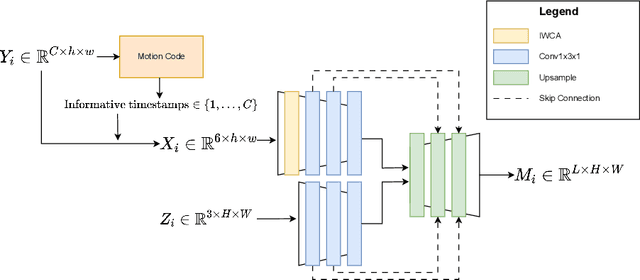



Abstract:Material segmentation is a complex task, particularly when dealing with aerial data in poor lighting and atmospheric conditions. To address this, hyperspectral data from specialized cameras can be very useful in addition to RGB images. However, due to hardware constraints, high spectral data often come with lower spatial resolution. Additionally, incorporating such data into a learning-based segmentation framework is challenging due to the numerous data channels involved. To overcome these difficulties, we propose an innovative Siamese framework that uses time series-based compression to effectively and scalably integrate the additional spectral data into the segmentation task. We demonstrate our model's effectiveness through competitive benchmarks on aerial datasets in various environmental conditions.
Effective Segmentation of Post-Treatment Gliomas Using Simple Approaches: Artificial Sequence Generation and Ensemble Models
Sep 12, 2024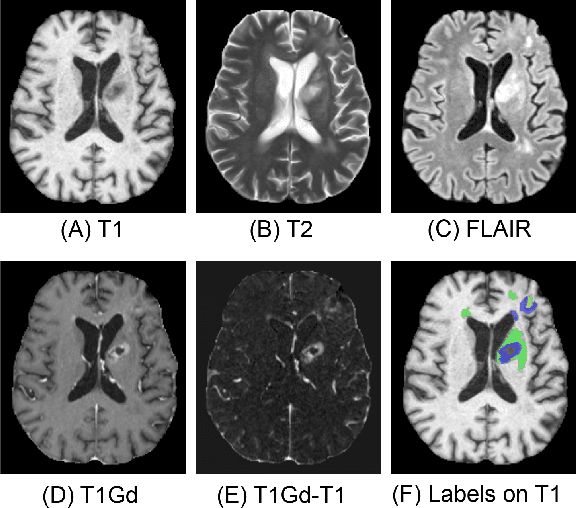
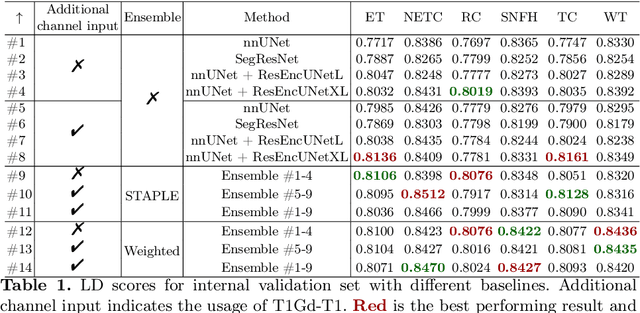
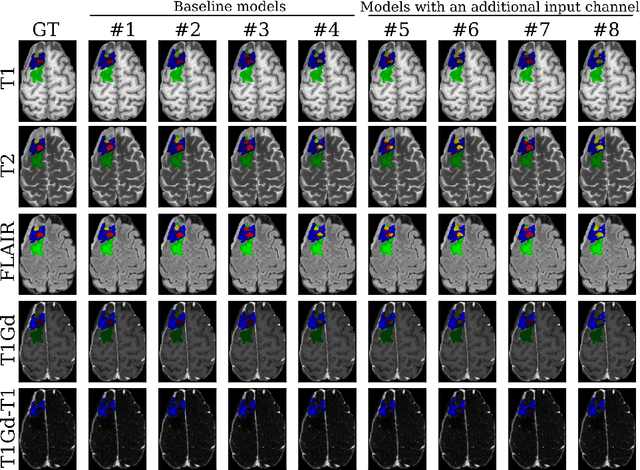
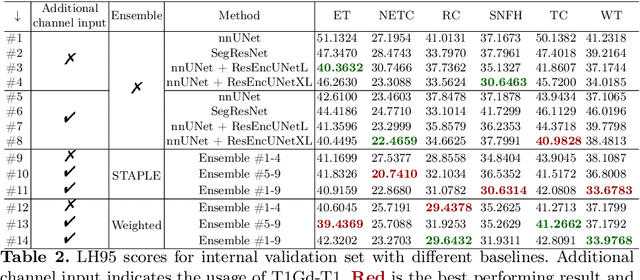
Abstract:Segmentation is a crucial task in the medical imaging field and is often an important primary step or even a prerequisite to the analysis of medical volumes. Yet treatments such as surgery complicate the accurate delineation of regions of interest. The BraTS Post-Treatment 2024 Challenge published the first public dataset for post-surgery glioma segmentation and addresses the aforementioned issue by fostering the development of automated segmentation tools for glioma in MRI data. In this effort, we propose two straightforward approaches to enhance the segmentation performances of deep learning-based methodologies. First, we incorporate an additional input based on a simple linear combination of the available MRI sequences input, which highlights enhancing tumors. Second, we employ various ensembling methods to weigh the contribution of a battery of models. Our results demonstrate that these approaches significantly improve segmentation performance compared to baseline models, underscoring the effectiveness of these simple approaches in improving medical image segmentation tasks.
Adapting to Shifting Correlations with Unlabeled Data Calibration
Sep 09, 2024



Abstract:Distribution shifts between sites can seriously degrade model performance since models are prone to exploiting unstable correlations. Thus, many methods try to find features that are stable across sites and discard unstable features. However, unstable features might have complementary information that, if used appropriately, could increase accuracy. More recent methods try to adapt to unstable features at the new sites to achieve higher accuracy. However, they make unrealistic assumptions or fail to scale to multiple confounding features. We propose Generalized Prevalence Adjustment (GPA for short), a flexible method that adjusts model predictions to the shifting correlations between prediction target and confounders to safely exploit unstable features. GPA can infer the interaction between target and confounders in new sites using unlabeled samples from those sites. We evaluate GPA on several real and synthetic datasets, and show that it outperforms competitive baselines.
CathAction: A Benchmark for Endovascular Intervention Understanding
Aug 23, 2024Abstract:Real-time visual feedback from catheterization analysis is crucial for enhancing surgical safety and efficiency during endovascular interventions. However, existing datasets are often limited to specific tasks, small scale, and lack the comprehensive annotations necessary for broader endovascular intervention understanding. To tackle these limitations, we introduce CathAction, a large-scale dataset for catheterization understanding. Our CathAction dataset encompasses approximately 500,000 annotated frames for catheterization action understanding and collision detection, and 25,000 ground truth masks for catheter and guidewire segmentation. For each task, we benchmark recent related works in the field. We further discuss the challenges of endovascular intentions compared to traditional computer vision tasks and point out open research questions. We hope that CathAction will facilitate the development of endovascular intervention understanding methods that can be applied to real-world applications. The dataset is available at https://airvlab.github.io/cathdata/.
Generalized knowledge-enhanced framework for biomedical entity and relation extraction
Aug 13, 2024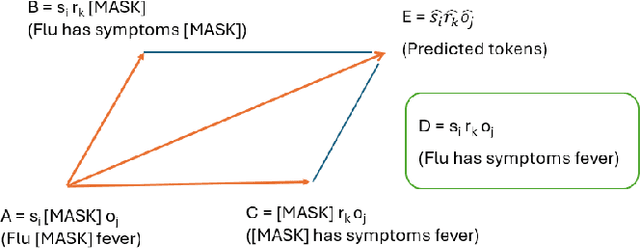
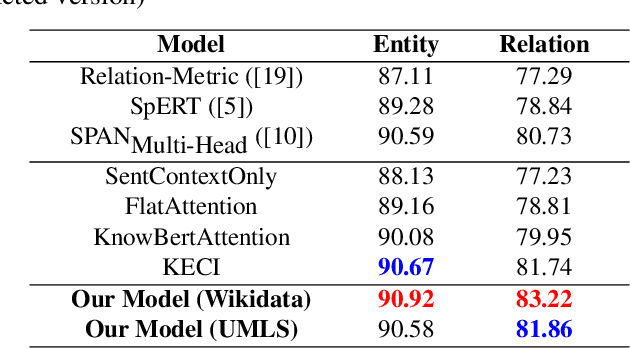

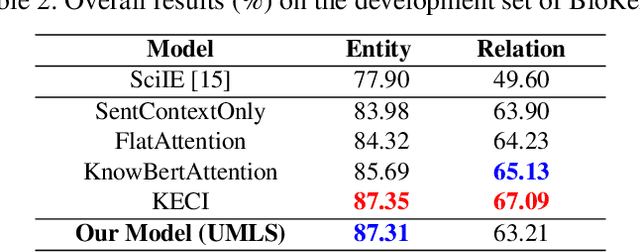
Abstract:In recent years, there has been an increasing number of frameworks developed for biomedical entity and relation extraction. This research effort aims to address the accelerating growth in biomedical publications and the intricate nature of biomedical texts, which are written for mainly domain experts. To handle these challenges, we develop a novel framework that utilizes external knowledge to construct a task-independent and reusable background knowledge graph for biomedical entity and relation extraction. The design of our model is inspired by how humans learn domain-specific topics. In particular, humans often first acquire the most basic and common knowledge regarding a field to build the foundational knowledge and then use that as a basis for extending to various specialized topics. Our framework employs such common-knowledge-sharing mechanism to build a general neural-network knowledge graph that is learning transferable to different domain-specific biomedical texts effectively. Experimental evaluations demonstrate that our model, equipped with this generalized and cross-transferable knowledge base, achieves competitive performance benchmarks, including BioRelEx for binding interaction detection and ADE for Adverse Drug Effect identification.
Identifying Speakers in Dialogue Transcripts: A Text-based Approach Using Pretrained Language Models
Jul 16, 2024



Abstract:We introduce an approach to identifying speaker names in dialogue transcripts, a crucial task for enhancing content accessibility and searchability in digital media archives. Despite the advancements in speech recognition, the task of text-based speaker identification (SpeakerID) has received limited attention, lacking large-scale, diverse datasets for effective model training. Addressing these gaps, we present a novel, large-scale dataset derived from the MediaSum corpus, encompassing transcripts from a wide range of media sources. We propose novel transformer-based models tailored for SpeakerID, leveraging contextual cues within dialogues to accurately attribute speaker names. Through extensive experiments, our best model achieves a great precision of 80.3\%, setting a new benchmark for SpeakerID. The data and code are publicly available here: \url{https://github.com/adobe-research/speaker-identification}
 Add to Chrome
Add to Chrome Add to Firefox
Add to Firefox Add to Edge
Add to Edge